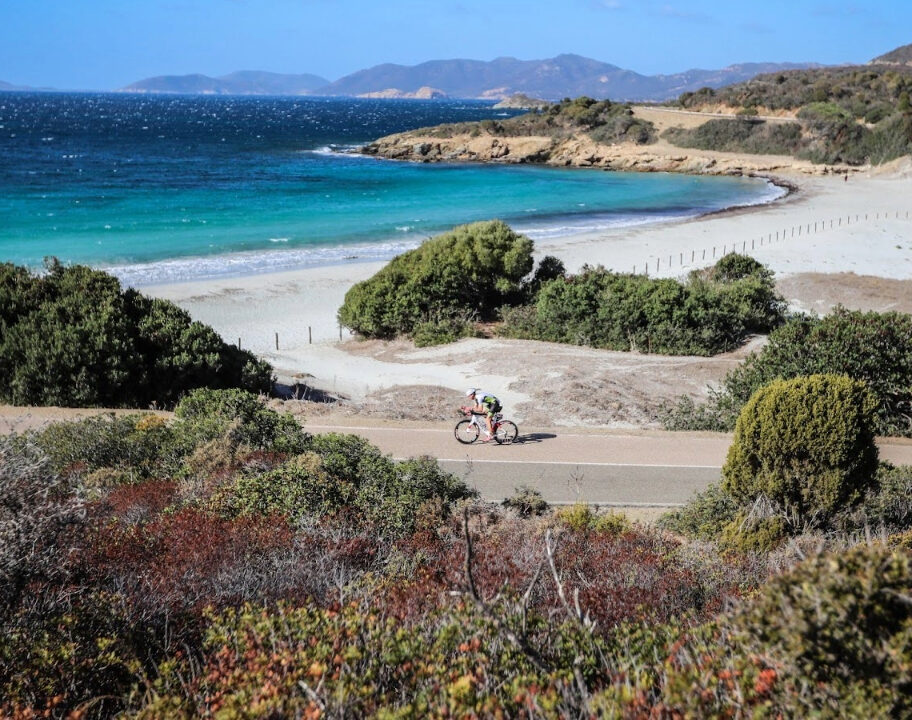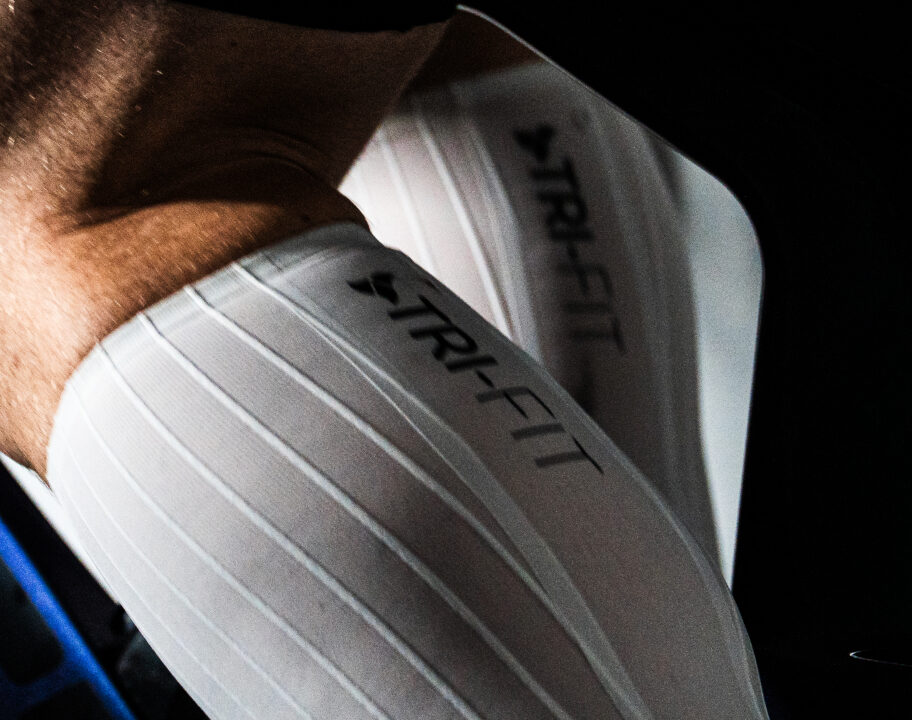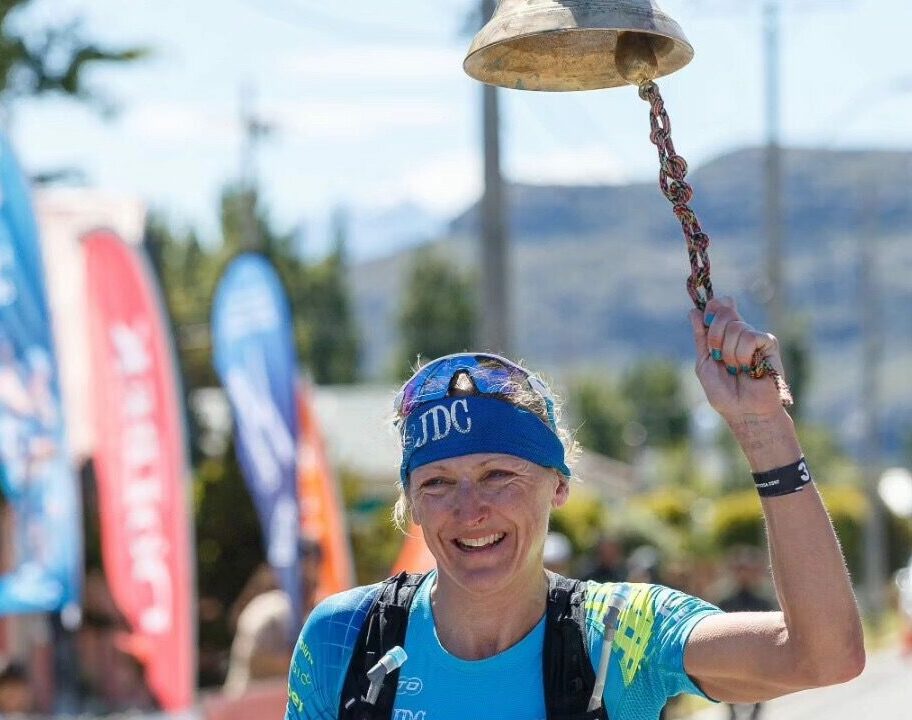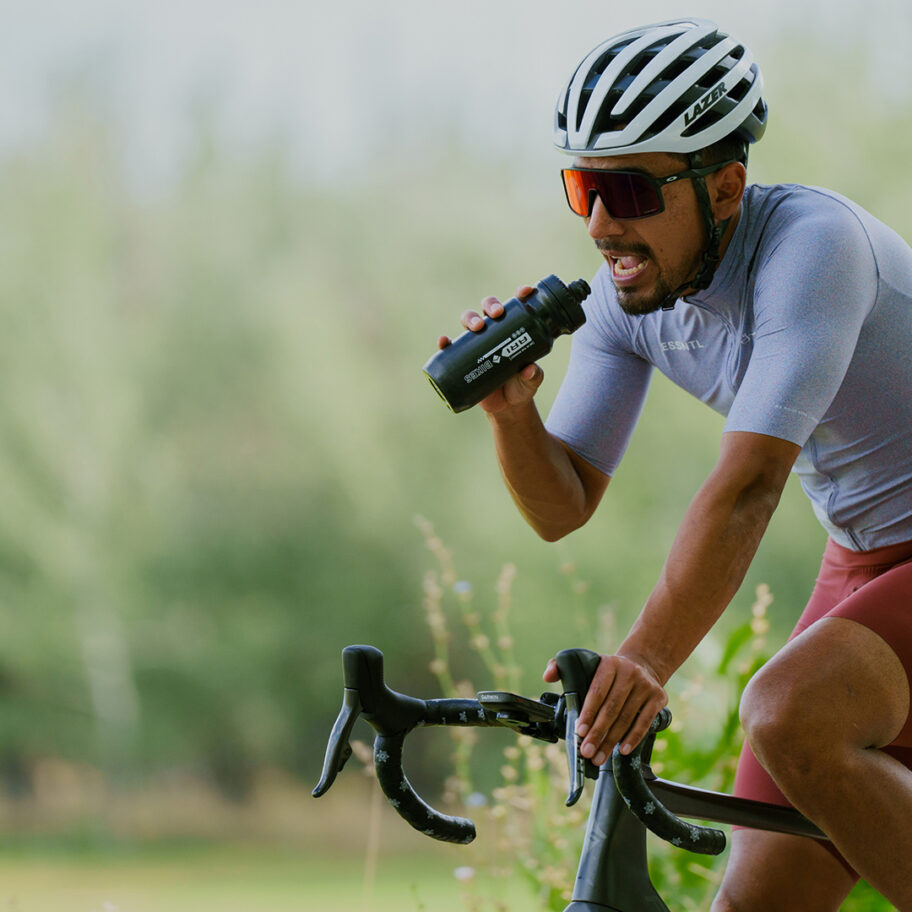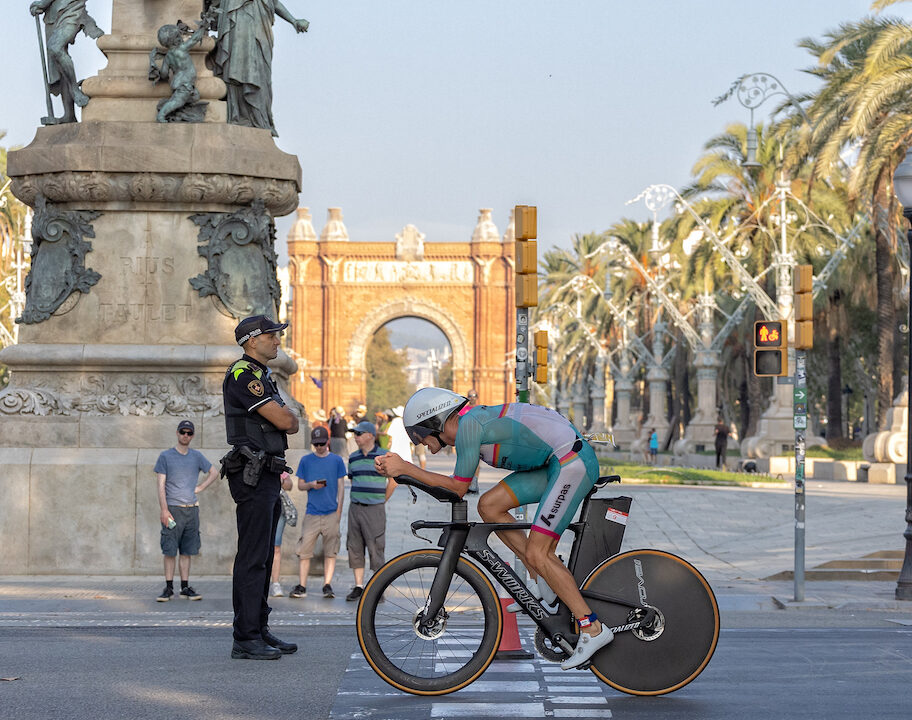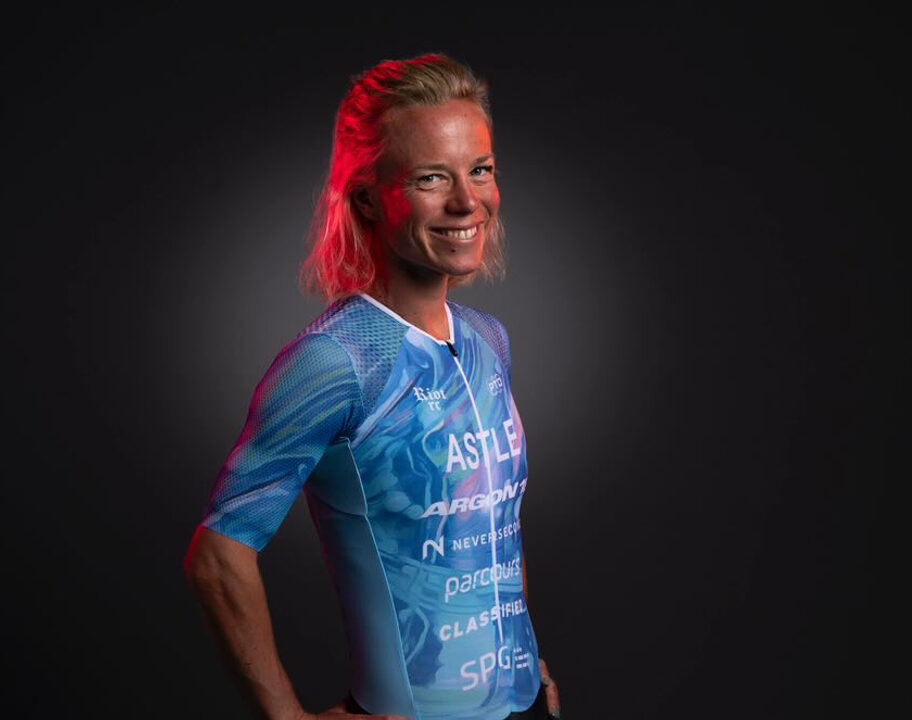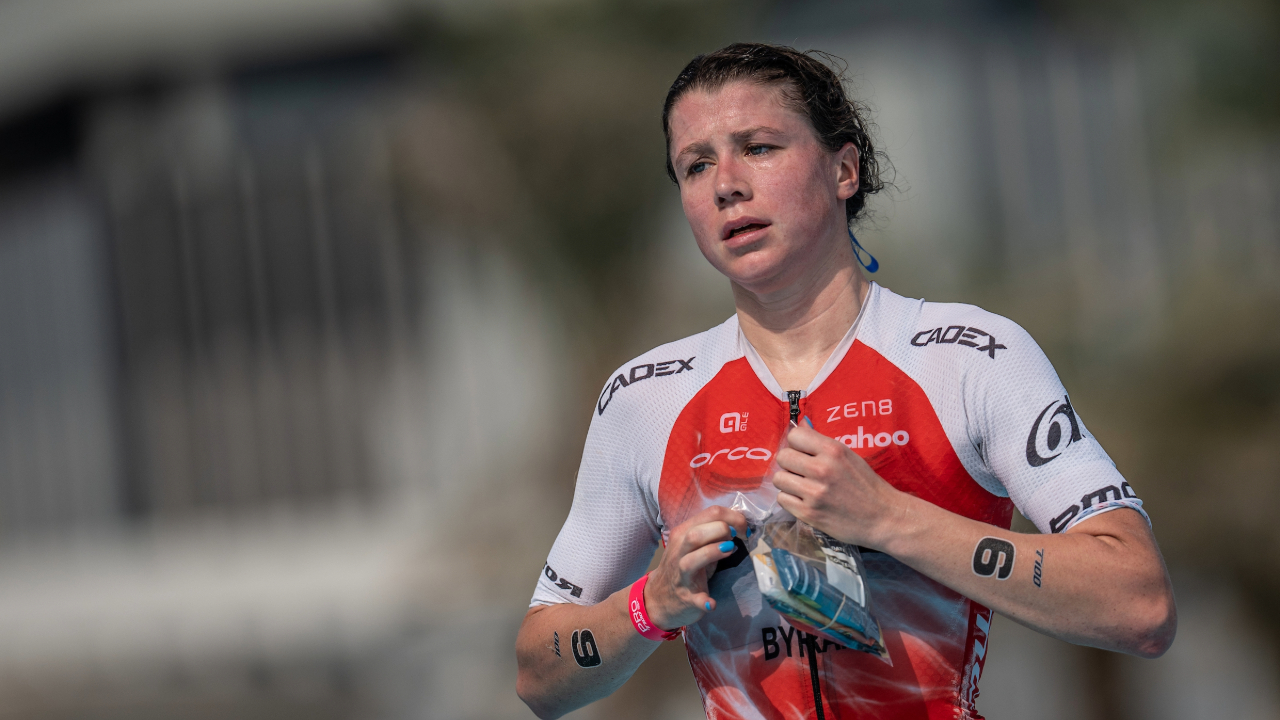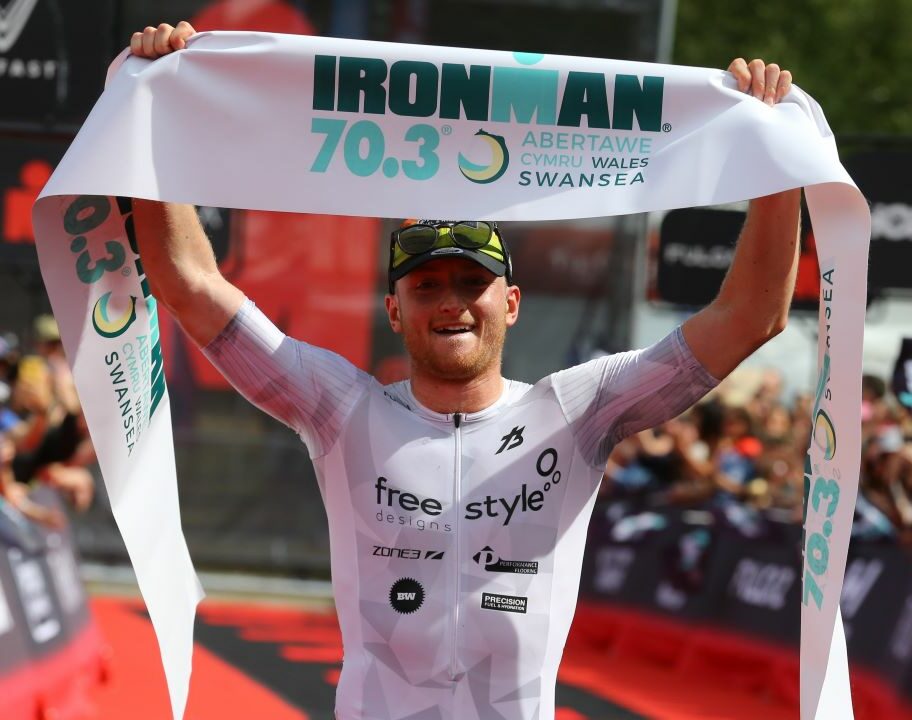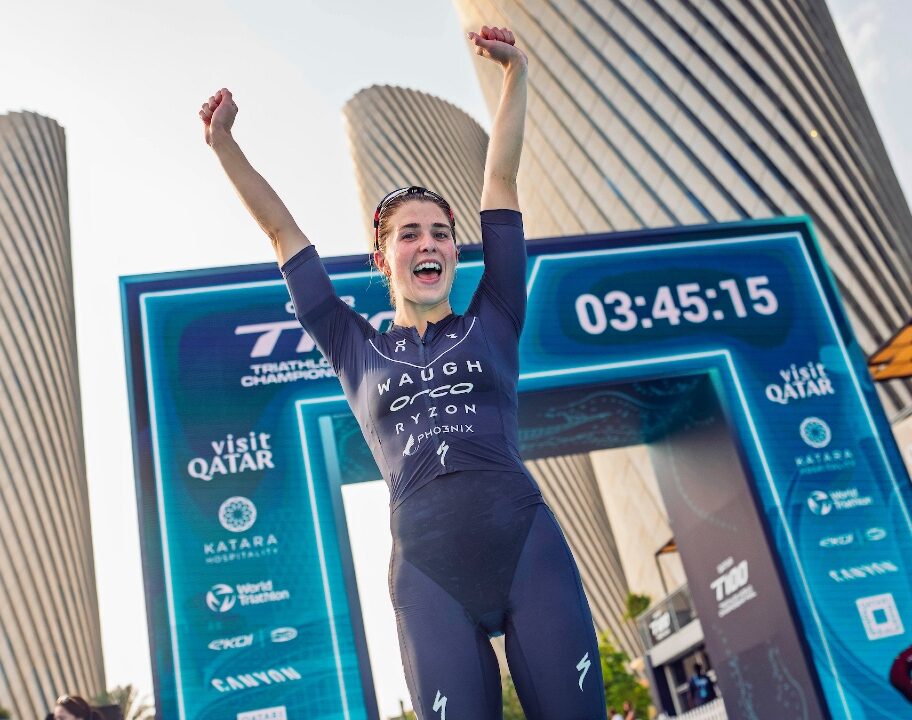Getting into open water swimming can feel daunting. Swimming in a lake, a river or the sea is a very different experience to swimming in a pool, and that can feel scary at first – even for the strongest of swimmers.
In our definitive open water swimming beginner’s guide, we share practical tips and insights to help you get started. From what to expect when you transition from the pool to open water and the swimming gear you might need. To the top tips to help you build up your confidence and cope in different scenarios you might encounter while wild swimming.
- What are the differences between swimming in the the pool and swimming in open water?
- Five things to know before your first open water swim
- How to plan for your open water swimming environment
- Sighting in open water – what it is and how to practice it
- Planning ahead for your first open water swim triathlon
What are the differences between swimming in the the pool and swimming in open water?
Open water swimming is any form of outdoor swim that takes place in a body of water which isn’t a pool environment. That might be a dedicated swimming lake, or it might be wild swimming in a river or the sea. Open water swimming can feel very different to pool swimming. Pool swimming is very controlled. The water is clear, you’re never far from the side, a lane rope or the bottom if you get tired or in trouble. Whereas in open water, things are far less predictable with colder, deeper water and wildlife to contend with. That’s the beauty of it – being out in nature. But it can also feel very out of your comfort zone.
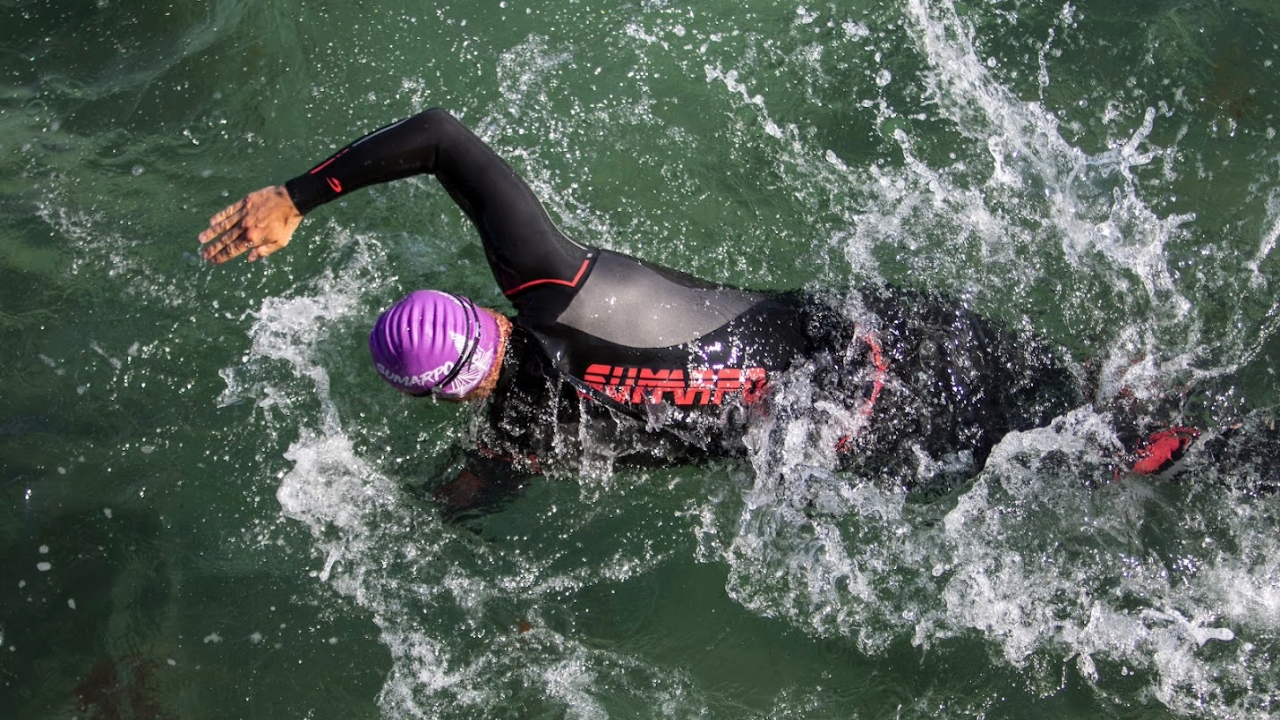
It’s perfectly normal to have an anxiety or a fear of swimming in open water. For many new triathletes it will be a daunting experience and venturing out into a lake, the sea or a river will be way out of their comfort zone. Nerves or anxiety about open water swimming are perfectly normal, and you can overcome them with a bit of preparation and practice. And for plenty of previously fearful triathletes and open water swimmers – getting in the water has since become their favourite activity!
Five things to know before your first open water swim
The best way to fall in love with open water swimming is to make sure you set yourself up to have a great first experience. And that means taking the time to make sure you know what to expect, you’ve got the right gear and what to be aware of – depending where you’re swimming.
1) You’re going to need to get some essential open water swimming gear
While you don’t need to go and buy heaps of new kit and equipment straight away to start open water swimming, it’s strongly advised to have a few key essentials to help you stay safe and feel more comfortable in open water. Typically that will include a swimming-specific wetsuit, a good pair of goggles and a brightly coloured swim cap. But for now, check out our open water essentials gear guide for more advice on what you need to get before your first open water swim.
2) The water is going to be colder than you’re used to
Unless you’re lucky enough to be swimming somewhere very warm, the water will most likely feel a lot cooler than the heated water of your local swimming pool. This can feel like a bit of a shock at first, and you may experience a slight shortness of breathing or even a sensation of mild panic. This is perfectly normal!
Take your time and get into the water slowly. Diving straight in, especially if you don’t know the depth can be dangerous and will increase the risk of cold water shock. Splash your face to acclimatise to the cooler temperature and allow a little water to get into your wetsuit. The neoprene is actually designed to warm this water up using your body temperature, which gives you a layer of insulation. Gradually submerge your head, and if you feel your breathing getting out of control go back to those childhood swimming lessons. Breathe out through your nose under the water to blow bubbles – it’ll help to stop you from hyperventilating.
RELATED: Cold water swimming – essential gear and tips
3) Your wetsuit will feel tight on dry land
For most of us, the first time we put a wetsuit on feels like an ordeal. It takes forever to haul the thing up, getting the zip done up is usually a two-person job. And once it’s on, it feels incredibly restrictive. Rest assured that when you get into the water, the wetsuit will loosen up and do a great job of helping you to float.
4) Avoid swimming on your own
Even the most experienced open water swimmers are advised to avoid swimming alone. Conditions can change quickly, or cramp/fatigue can kick in so it’s important to have someone else around so you can look out for each other. It also makes the experience so much more fun! Check out your local triathlon club or swimming club to find organised group sessions. It’s a great way to meet new people in the process. You’ll also be able to get some guidance from more experienced swimmers to help you improve your swimming and go further or faster (if you want to!) once you’ve built up your confidence.
5) Practice in shallow water first
A big fear factor for many would-be open water swimmers is the deep water. Finding somewhere shallow – such as the edge of the lake, or close to the shore in the sea is a great way to build up your confidence and control your anxiety. Get used to the sensation of swimming in a wetsuit and the additional buoyancy it provides. Now is a good time try floating. You will float exactly the same in the deeper water as you will in the shallows. Another one for the memory bank – that buoyancy offered by your wetsuit is the beginner’s friend.
The panel locations of more buoyant neoprene will support you in the water and help you with your swim position. If you stop swimming the buoyancy in the suit will allow you to float. Rolling onto your back will give you an opportunity to catch your breath and gather your thoughts. Trust in the suit and it will be one less thing to worry about.
Start slow and shallow, gain confidence. Swimming near the shore will provide reassurance and allow you to develop without fear of the deeper water creeping in.
How to plan for your open water swimming environment
If you’re choosing somewhere to open water swim for the first time. Or, if you’ve ticked off those first few swims and now you’re excited to experiment with swimming in different environments. It’s important to know what to expect – and plan for – when you’re swimming in different types of open water. Here are the considerations and elements to be aware of:
Swimming in rivers:
- Current: slower at the sides, deeper and faster in the middle
- Swim near the sides if you’re swimming against the current. Just be careful it’s not too shallow, don’t hit the bottom!
- If the swim is out-and-back will you be fighting the current in one direction
- You may be able to stand up in many rivers – go towards the sides of the river bank where it will be the shallowest.
Sea swimming:
- Waves, wind, spray
- Strong currents can take you off course quickly, keep regular sightings to stay on course
- Faster stroke cadence, straighter arms avoid catching choppy waves with your hand that can sap energy
- Bi-lateral breathing can help as waves can interrupt your breathing rhythm.
- Regular sighting to keep on course, keeping your swim distance to the minimum
Open water swimming in a lake:
- Calmer than the sea, but in winds can still be choppy with smaller, energy-sapping waves
- Breathing to the side away from the waves will avoid you getting a mouthful of water
- For deep water starts practice treading water. Give the person in front a bit of extra space. When the gun goes, their feet will suddenly be in your face!
- Consider faster, punchier strokes. Long, slow, gliding strokes are not easy to maintain in choppier and busier open water conditions compared to the pool
- Some lakes are not very deep. The water at Holme Pierrepont, Nottingham for example is quite shallow around the edges. You can swim confident that at any point you can stand up
Wherever you choose to swim, make sure you always take a moment before getting in the water to make sure it’s safe, you know what the hazards are, you’re visible to other water users and you know where the best exit points are should you need to get out of the water in a hurry.
Sighting in open water – what it is and how to practice it
For open water swimming beginners, sighting might be an unfamiliar term. Sighting in open water means incorporating a quick look around into your swim stroke (if you’re swimming front crawl) to make sure you’re swimming in the direction you intended. It’s an essential form of navigation when swimming outdoors, with no lane ropes or black pool tiles to guide you!
You can practice sighting in the swimming pool to help you get ready for open water swimming. Choose a spot on the wall or at the end of the lane and practice looking at it between strokes. Once you’re in open water, find a buoy, a flag on shore, a tree, a building or some other landmark to focus on. Make sure it’s something that can’t move/disappear mid-swim – a parked car for example, wouldn’t be good to use for sighting in case the owner drives off! Regularly check you’re still swimming towards your landmark of choice.
If you find yourself getting disorientated, just take a few strokes of breast stroke or even tread water (remember, your wetsuit will help you float) to look around properly and get your bearings.
How to deal with currents in the water
Currents can take you off course and result in longer swim distances. Try to feel how this will affect your swim and take that into account whilst you are sighting. If the current is flowing across your path (left to right for example) as it may do in the sea or lake, you will have to adjust your course to find a target farther to the left of your anticipated exit point. Aiming (left) into the wind, waves or current will compensate for it naturally pushing you to the right.
As we’ve mentioned in our river swimming considerations above, keep in mind that if you’re swimming an out and back route and you’ve got the current or tide with you on the way out – you’re going to have to work a lot harder to fight against it on the way back. Keep a track of how far you’re swimming and make sure you will have the energy to swim back. If in doubt, swim against the current first so you’ve got an easier swim back. Or reduce the distance you swim out with the current.
In the sea, rip tides can be a risk. Always swim adjacent to the shore, horizontally rather than out to sea And opt for lifeguarded beaches with flags to identify the safest spots to swim. You can sometimes see rip currents, identifiable by a particularly churning or choppy stretch of water. But not always. If you do get caught in a rip tide, stay calm. Try to swim ‘across’ – parallel to the shore, rather than against the rip until you’re out of it. Then return to shore. Trying to swim against it will just exhaust you. If you can’t swim parallel to get out of the rip, remember your wetsuit will help you to float. Stay calm and roll onto your back, lifting an arm and shouting for help.
Planning ahead for your first open water swim triathlon
Feeling more confident about open water swimming and ready to race an open water triathlon? Here are a few thoughts on choosing where to start.
- Consider your first events swim section carefully, pool, lake, river or sea swim?
- One thing to consider is the temperature of the swim in a triathlon. If the water gets too warm then the swim may be a tri-suit only. This can be a cause of concern for some swimmers who rely on the buoyancy of the suit for comfort. Most triathlons in the U.K. are wetsuit-legal, but an extended heatwave can increase the water temperatures.
- Remember that for all of those pool swims you didn’t need your wetsuit for help, so enjoy the warmer water… should it arise!
Learn more about triathlon wetsuit rules in our open water swimming beginner’s wetsuit guide.

Considerations for open water swimming beginners taking on their first triathlon
- Think about where you start in the water. Will it be quieter to stay back and to the side and avoid the pack thrashing when the gun goes? If you are a weaker / slower swimming, then placing yourself right at the front in the centre is likely to be a mistake as you’ll have faster swimmers rushing by you.
- Control your pace at the start – it’s easy to get swept up in the moment and set off too fast.
- Make sure you know the course before the race – what direction do you need to swim in? Where’s the first turn buoy? Getting this straight in your head before the race will help you to feel less disoriented.
- At the turn buoys, stay to the outer edge – furthest away from the buoys – if you don’t want to get caught up in congestion with other swimmers.
- Don’t be afraid to do a few strokes of breast stroke if you need to so you can get your bearings.
What to do if you start to feel panicky during a triathlon swim
With the nerves, adrenaline and excitement flowing. And the water far busier than usual because it’s filled with our triathletes. It’s not uncommon to feel a sensation of panic during a triathlon swim, particularly for first timers. Don’t let that put you off – being aware that it might happen in the first instance puts you in a much better place to cope with it.
- Be prepared for panic – that might sound strange, but just having that thought at the back of your mind that, “Sometimes, stress can happen for anyone, it’s quite common”, can help you should the situation arise.
- Roll onto your back and float for a moment. Remember, particularly in a wetsuit, you’ll have practised floating many times before.
- Treading water – with the benefit of that flotation – will ease your panic and help you gradually relax.
- Manoeuvre yourself to a safety point if required
- Take a moment to compose yourself and start again
- Focus on the next few strokes to maintain composure
- Focus on breathing, stroke technique, direction
- Count your strokes and maintain breathing control
- Focus on the now – you are capable of swimming the distance, and if you need help – the safety boats are there to support you. Rationalise the situation
Practice – and planning – are the ultimate tools for beginners open water swimming
By thinking ahead you will be able to anticipate what problems you might encounter and plan for these. If you can visualise these issues in advance, then you will significantly improve your chances of an enjoyable and pressure-free swimming experience. And if issues should arise, calling upon your learnings through training, will provide more opportunity to reduce their impact on you.
Hopefully our open water swimming beginner’s guide has helped you have an understanding of the elements of open water swimming, what you need to be prepared for and how you can take it all in your stride to have a safe – and enjoyable – swimming experience.

